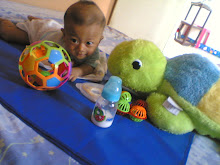Direct Speech (Kalimat Langsung) ialah kata-kata kalimat yang diucapkan langsung oleh si pembicara.
Indirect Speech (Kalimat Tak Langsung) ialah kalimat yang diucapkan untuk melaporkan kata-katansi pembicara kepada orang lain. Jadi, Indirect Speech (Reported Speech) digunakan bila kita ingin melaporkan kata-kata seseorang kepada orang lain secara tak langsung.
Direct & Indirect Speech terdiri dari 3 jenis yaitu :
I. Statement (pernyataan)
II. Command (perintah)
III. Question (pertanyaan)
Perubahan-perubahan yang perlu dari Direct ke Indirect Speech :
1. To be & Auxiliary Verbs
Direct Indirect
Am/is/are - was/were
Shall/will - should/would
Can - could
May - might
2. Time & Place (keterangan waktu & tempat)
Direct Indirect
now - then
tomorrow - the following day
next week - the following week
tonight - that night
today - that day
yesterday - the day before
3. Tenses
Direct Indirect
Simple present - simple past
Present continous - past continous
Present perfect continous - past perfect continous
Simple future - past future
I. STATEMENT
Dalam Indirect Statement kita menggunakan kata that (bahwa) sebagai penghubung antara kalimat pengantar (introduce phrase) dan kata-kata yang dilaporkan (reported words). Kalimat-kalimat pengantar dalam indirect statement ialah :
He said
He said to me that + reported words
He told me
e.g - Mary told her friends “I have been to Bali twice.”
- Mary told her friends that she had been to Bali twice.
- Father said “I am going out of town tomorrow”
- Father said that he was going out of town the following day.
Apabila kalimat pengantarnya dalam bentuk Simple Present Tense, maka kalimat yang dilaporkan tidak mengalami perubahan.
e.g - John says “I will go to Bandung tomorrow”
- John says that he will go to Bandung tomorrow
- Mary says “I have seen that film”
- Mary says that she has seen that film.
II. COMMAND
Command dibagi dalam 2 (dua) bagian yaitu :
1. Positive Command
Dalam perintah positif kita tambahkan to di depan kalimat perintahnya, sebagai penghubung antara kalimat pengantar dan perintah yang dilaporkan. Kalimat-kalimat pengantar dalam jenis ini ialah :
to + infinitive
He asked me
He told me
e.g - He asked me “Open your book”
- He asked me to open my book.
- Mary told me “Stop talking to Jane”
- Mary told me to stop talking to Jane.
2. Negative Command
Dalam perintah negatif kita tambahkan not to di depan perintah yang dilaporkan.
e.g - Mary told John “Don’t wait for me”
- Mary told John not to wait for her.
- I told him “Don’t mention it to anyone”
- I told him not to mention it to anyone.
III. QUESTION
Bila pertanyaan langsung (direct question) menggunakan kata-kata tanya seperti ; Where, When, Why, What, Who, How, dll, maka kata-kata tersebut digunakan sebagai penghubung dalam reported Speech. Pertanyaan yang dilaporkan berubaha menjadi bentuk positif. Kalimat pengantarnya ialah :
Positif Form
He asked me where
When etc.
e.g - The man asked me : “Where do you live ?”
- The man asked me where I lived.
- John asked Mary : “Why do you get angry with me ?”
- John asked Mary why she got angry with him.
Bila pertanyaan langsung tidak menggunakan kata-kata tanya, dan hanya merupakan pertanyaan dalam bentuk “Yes & No Question”, maka kita menggunakan kata-kata if, whether (jika, apakah) sebagai penghubung antara kalimat pengantar dan pertanyaan yang dilaporkan.
e.g - The boy asked John : “Does Mary live near here?”
- The boy asked John if Mary lived near there.
- The teacher asked her : “Have you finish your homework ?”
- The teacher asked her if he had finished her homework.
IV. REPORTED SPEECH / MIXED TYPE (Jenis Gabungan)
Bila pertanyaan dan pernyataan digabung dalam Reported Speech maka kita menggunakan kata as (karena) sebagai penghubung pada bagian kalimat pernyataan yang dilaporkan. Dalam hal ini kalimat pernyataan tersebut dilaporkan kemudian. Perhatikanlah contoh-contoh berikut ini :
e.g - She asked me :”What is the time ?”, my watch has stopped.
- She asked me what the time was as her watch had stopped.
- Ira asked John :”what is the matter with you ?”, You don’t look well.
- Mary asked John what the matter was with him as he didn’t look well.
Bila dalam pertanyaan langsung disertai dengan jawaban Yes dan No, maka kita menggunakan kata but sebagai penghubung untuk jawaban No dan kataand sebagai penghubung untuk jawaban Yes.
e.g - He asked me :”Will you go out wiith me ?” No, I won’t.
- He asked me if I would go out with him but I said I wouldn’t.
- Mother asked John :”Have you had lunch ?” No, I haven’t.
- Mother asked John if he had had lunch but he said he hadn’t.
Direct & Indirect with Auxiliaries
Perhatikan perubahan-perubahan yang perlu dari Auxiliaries
Direct Indirect
Was/were - had been
can - could
may - might
must & have to - had to
must not - wasn’t to/musn’t
needn’t - didn’t have to
e.g - Mary said :” I was sick yesterday.”
- Mary said that she had been sick the day before.
- The man asked me :” Can you speak English ?”
- The man asked me if I could speak English.
Langganan:
Posting Komentar (Atom)

oge....
BalasHapuscontohnya sudah cukup bagi saya untuk mengerti bab direct and indirect speech..
Blogspot Tutorial